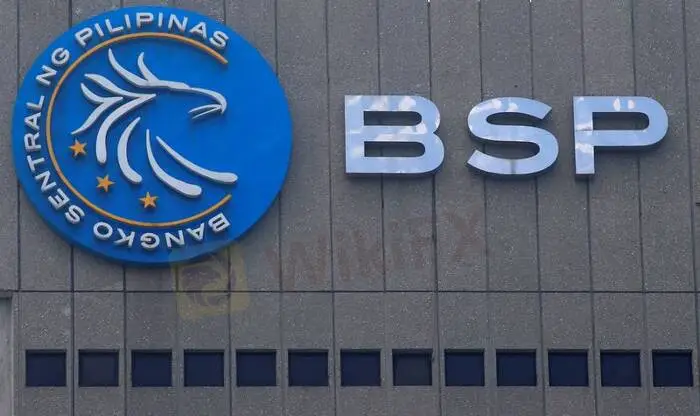简体中文
繁體中文
English
Pусский
日本語
ภาษาไทย
Tiếng Việt
Bahasa Indonesia
Español
हिन्दी
Filippiiniläinen
Français
Deutsch
Português
Türkçe
한국어
العربية
Philippine central bank to keep steady hand on policy lever until Q422 – Reuters poll
Abstract:The Philippine central bank will wait until the end of the year before raising interest rates from a record low 2.0% to support an uneven economic recovery from the COVID-19 pandemic, a Reuters poll found.

With inflation remaining subdued compared to advanced economies and growth in the Southeast Asian nation yet to return to pre-pandemic levels, the Bangko Sentral ng Pilipinas (BSP) will stick to its dovish stance.
All 21 economists in a Feb. 1-14 poll predicted the BSP would leave its benchmark rate at 2.0% at its Feb. 17 meeting.
That was in line with Governor Benjamin Dioknos view monetary policy would remain accommodative as long as required to underpin growth and not necessarily follow the U.S. Federal Reserve which is expected to raise rates next month.
While the Feds last monetary policy tightening cycle led to heavy capital outflows in emerging economies leaving local currencies considerably weaker, economists do not predict a repeat this time.
“We don‘t expect any changes in policy from BSP, at least for now. Governor Diokno stepped up his dovish rhetoric after inflation moderated in January, indicating that he did not want to ’change course in the middle of a recovery,” wrote Robert Carnell, regional head of research for Asia-Pacific at ING.
“However, the dovish BSP stance against the backdrop of a hawkish Fed could translate into additional pressure on the Philippine peso in the near term.”
The Philippine peso has been relatively stable this year, depreciating only about 1% against the U.S. dollar. A Reuters poll taken early last month showed the peso would hover around the current rate this year. [EMRG/POLL]
The central bank was expected to raise its key interest rate to 2.50% towards the end of 2022, followed by 25 basis points in the second quarter of 2023 and another 25 basis points in the July-September quarter, taking rates to 3.00%.
Almost half, seven of 15 respondents, forecast a rate hike of at least 25 basis points by the end of the third quarter, including three who said it would come as early as April-June.
Still, most respondents in the poll said the central bank would be on a wait-and-watch mode before changing gears.
That cautious approach echoes the stance of a few other central banks in Asia, including the Reserve Bank of India and the Bank of Thailand who were expected to maintain an accommodative stance rather than trying to calm inflation.

Disclaimer:
The views in this article only represent the author's personal views, and do not constitute investment advice on this platform. This platform does not guarantee the accuracy, completeness and timeliness of the information in the article, and will not be liable for any loss caused by the use of or reliance on the information in the article.
Read more

The 5%ers Review: Is it a Scam or Legit? Find Out from These Trader Comments
Did you face reduced leverage and hiked fees without any explanation from The 5%ers broker? Do you find The 5%er rules strange for getting a funded account from this prop trading firm? Has the broker closed your trade inappropriately, preventing you from making gains in the forex market? All these allegations have dominated The 5%ers review segment online. Looking at this, the WikiFX team investigated and found some startling comments against the broker. In this article, we have shared those complaints. Read on!

Inzo Broker Review 2025: A Complete Look at Features, Costs and User Claims
Inzo Broker presents itself as a modern forex and CFD broker, started in 2021 and registered in Saint Vincent and the Grenadines. At first glance, it offers an attractive package for traders: access to the popular MetaTrader 5 (MT5) and cTrader platforms, different types of accounts for various budget levels, and a wide selection of assets to trade. These features are made to attract both new and experienced traders. However, a closer look shows a big difference between these advertised benefits and the real risks. The broker works under an offshore regulatory system, which gives limited protection to investors. More importantly, Inzo has collected many serious user complaints, especially about withdrawing funds and changing trading conditions unfairly. This mix of weak oversight and serious user claims creates a high-risk situation that potential clients must carefully think about. This review will break down these parts to give a clear, fact-based view.

An Unbiased Review of INZO Broker for Indian Traders: What You Must Know
INZO is a fairly new company in the online trading world. It started in 2021 and is registered in Saint Vincent and the Grenadines. Traders in India and around the world have noticed this broker because it offers access to popular trading platforms such as MetaTrader 5 (MT5) and cTrader. It also lets you trade many different things, such as foreign currencies, stocks, and digital currencies. The broker tries to be easy to use with features such as a low minimum deposit, which can be appealing to new traders. However, when you look more closely, the situation becomes more complicated. INZO operates as an offshore-regulated company, which brings certain risks that every trader needs to understand. Also, user feedback is very mixed - there are many serious complaints alongside some positive experiences. Read on this in-depth review of the broker.

Is Inzo Broker Safe or a Scam? An Evidence-Based Analysis for Traders
When traders check out a new broker, the main question is always about safety and whether it's real. Is Inzo a trustworthy partner for your trading capital, or is it a scam you should stay away from? The broker looks modern and professional, offering popular platforms and many different account types. However, this polished look is clouded by many serious complaints from users who report big problems with their money and trading conditions. A simple "yes" or "no" answer isn't enough. To reach a good conclusion, we need a detailed investigation based on facts. This analysis will give you a clear and fair breakdown of the facts. We will cut through the mixed information to give you a complete picture of Inzo.
WikiFX Broker
Latest News
BASF CEO: EU CO₂ Trading Is A "Destruction Mechanism" For European Industry
Is Fyntura a Regulated Broker? A Complete 2025 Broker Review
Zetradex Exposed: Withdrawal Denials, Account Freeze & Bonus Issues Hurt Traders
Is Forex Zone Trading Regulated and Licensed?
PINAKINE Broker India Review 2025: A Complete Guide to Safety and Services
Exness Restricted Countries List 2025 Explained
Is Uniglobe Markets Legit? A 2025 Simple Guide to Its Safety, Services, and User Warnings
Is Inzo Broker Safe or a Scam? An Evidence-Based Analysis for Traders
WikiEXPO Dubai 2025 “Welcome Party” Kicks Off Tonight!
He Trusted a WhatsApp Group and Lost RM659,000
Currency Calculator



